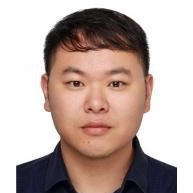Deep Learning in Computer Vision and Image Processing
A special issue of Electronics (ISSN 2079-9292). This special issue belongs to the section "Computer Science & Engineering".
Deadline for manuscript submissions: closed (15 February 2024) | Viewed by 13985
Special Issue Editors
Interests: computer vision; medical imaging; medical big data management
Interests: medical artificial intelligence; medical imaging
Special Issue Information
Dear Colleagues,
In recent years, with the rapid development of deep learning algorithms, graphics processing units (GPUs) and other hardware computing devices, deep learning technology has been widely used in computer vision and image processing, such as object detection, image segmentation, face recognition, autonomous driving, virtual reality, medical diagnosis and other industries. As an application-oriented technology, it has shown immeasurable commercial value and application prospects. However, the high computational cost limits its application in certain systems, such as mobile phones, an indispensable terminal device in modern society. Therefore, how to effectively improve the existing methods based on deep learning techniques is also an area of valuable research. Existing acceleration studies include quantization, pruning, sparse and distillation, but they are more limited to classification networks, and combining acceleration efforts for different tasks remains an important direction worth investigating. In this case, research on the use of deep learning in computer vision and image processing would be very timely and of great interest to all those working in this field, and this topic may enable more practical applications.
In this Special Issue, we welcome manuscripts on the design of specialized acceleration algorithms for concrete research directions to enable task-specific applications. In addition, we also welcome all emerging research efforts, new solutions to existing problems, and even new problems. Research areas may include (but are not limited to) the following:
- Three-dimensional computer vision;
- Applications of computer vision and vision for X;
- Biomedical image analysis;
- Computational photography, sensing, and display;
- Deep learning for computer vision;
- Document image analysis;
- Faces and gestures;
- Poses and actions;
- Generative models for computer vision;
- Low-level vision and image processing;
- Motion and tracking;
- Physics-based vision and shape from X;
- Recognition, including feature detection, indexing, matching, and shape representation;
- RGBD and depth image processing;
- Robot vision;
- Scene analysis and understanding;
- Computer vision theory;
- Segmentation and grouping;
- Video analysis and event recognition;
- Video processing and communication;
- Efficient training and inference methods for n.
We look forward to receiving your contributions.
Prof. Dr. Beiji Zou
Prof. Dr. Xiaoyan Kui
Dr. Weixin Si
Guest Editors
Manuscript Submission Information
Manuscripts should be submitted online at www.mdpi.com by registering and logging in to this website. Once you are registered, click here to go to the submission form. Manuscripts can be submitted until the deadline. All submissions that pass pre-check are peer-reviewed. Accepted papers will be published continuously in the journal (as soon as accepted) and will be listed together on the special issue website. Research articles, review articles as well as short communications are invited. For planned papers, a title and short abstract (about 100 words) can be sent to the Editorial Office for announcement on this website.
Submitted manuscripts should not have been published previously, nor be under consideration for publication elsewhere (except conference proceedings papers). All manuscripts are thoroughly refereed through a single-blind peer-review process. A guide for authors and other relevant information for submission of manuscripts is available on the Instructions for Authors page. Electronics is an international peer-reviewed open access semimonthly journal published by MDPI.
Please visit the Instructions for Authors page before submitting a manuscript. The Article Processing Charge (APC) for publication in this open access journal is 2400 CHF (Swiss Francs). Submitted papers should be well formatted and use good English. Authors may use MDPI's English editing service prior to publication or during author revisions.
Keywords
- efficient deep learning
- computer vision
- image processing
- model compression and acceleration







